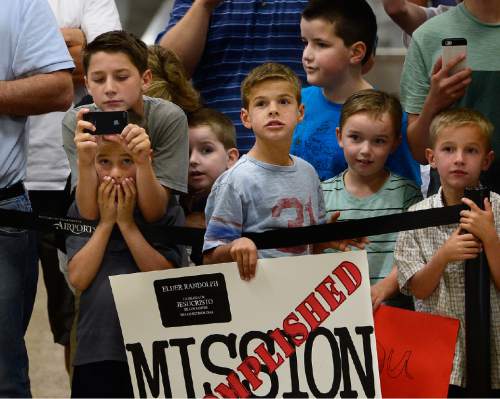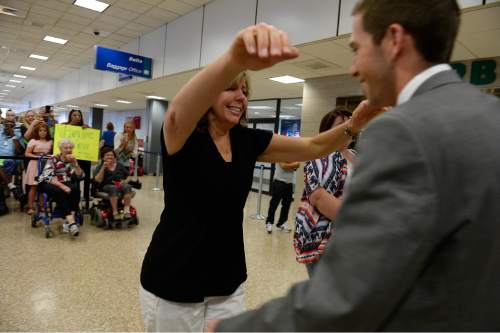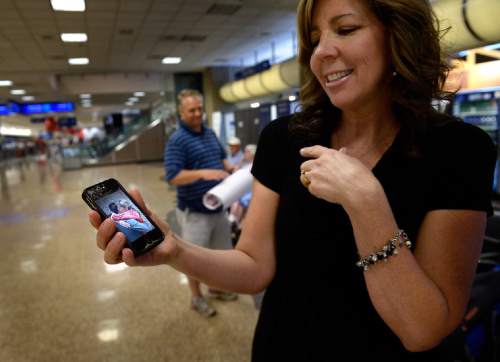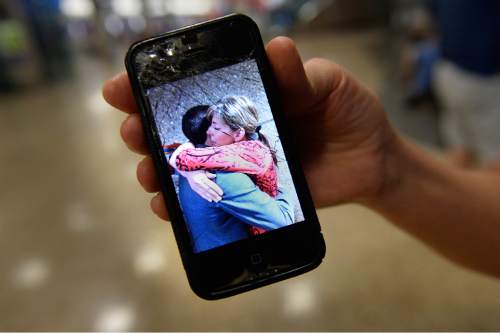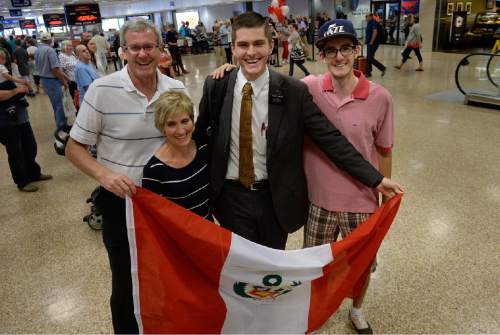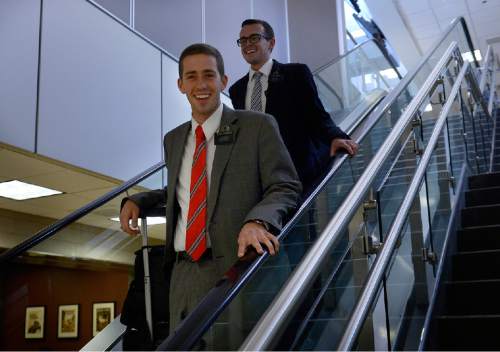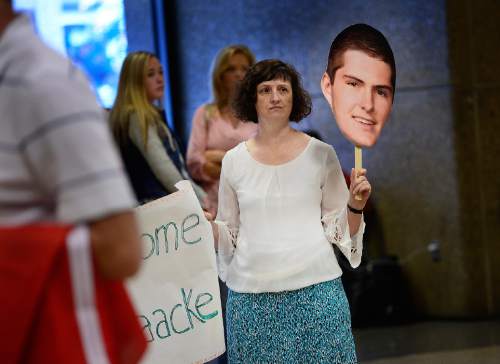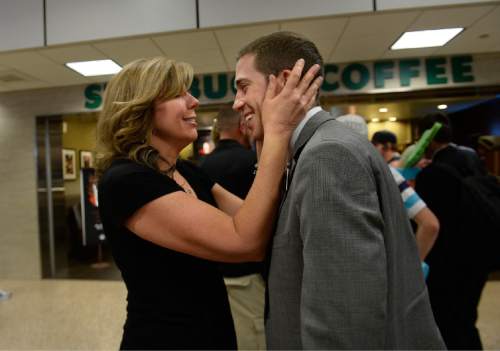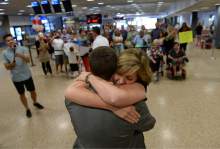This is an archived article that was published on sltrib.com in 2015, and information in the article may be outdated. It is provided only for personal research purposes and may not be reprinted.
When Provo attorney Ken Parkinson picked up his daughter from Salt Lake City International Airport, he got more than he bargained for.
He came with his wife and two children, along with a white "Welcome Home" poster for Monica, who was returning from an 18-month Mormon mission in Peru.
His family's display, he said, "paled in comparison to a lot of other families'."
Parkinson said he saw groups with 30 or 40 people waiting to greet their returning LDS missionaries, carrying professionally printed banners, balloons, cowbells and other noisemakers.
One family hired a videographer, and another wore fake adhesive mustaches — everybody from Grandma to the babies. It's not uncommon to see groups with foam fingers and matching T-shirts. Some have performed flash mobs.
Although it's a usual sight at Utah's largest airport — Salt Lake City is, after all, home to the headquarters of The Church of Jesus Christ of Latter-day Saints — it's becoming a problem.
Passengers trying to exit, claim their bags or find their own loved ones must dodge these Mormon masses crowded around the escalator. And creating a clear path for other passengers can be tricky, said airport public-relations manager Bianca Shreeve.
"We love being the home base for so many people and the love that is brought about by these crowds," Shreeve said. "But it poses some unique challenges."
In fact, those challenges are pushing airport officials to include a special greeting area for loved ones — including families of returning LDS missionaries — in the major renovation underway at the airport. That should be in place in 2020.
Airport officials want to keep the "awesome energy" that comes with these challenges, Shreeve said. "Being around that is pretty special. We appreciate being the venue for that."
These reunions can be sweet.
When Spanish Fork mother Sheli Randolph greeted son Tyler in September, the two embraced for a full minute, she recalled, with "lots of happy tears."
"It was a loving hug," Tyler said. "It was something I haven't experienced in two years."
More than a decade ago, in 2001 — in the wake of the 9/11 terrorist attacks and increased restrictions at U.S. airports — LDS leaders counseled that "only immediate family members should go to the airport to pick up [returning] missionaries."
"Extended family members and others who wish to greet a returning missionary," the letter added, "should do so at the missionary's home or at some other location other than the airport."
For its part, the airport requests that people be thoughtful.
Parkinson agrees.
"Everyone's excited to have their missionary come home," he said. "But we need to be considerate of other people who are using the airport. Think about what the effect is going to be if I bring 60 people to the airport."
Either way, airport arrivals — large or small — have become a rite of passage for many missionaries.
"It's obvious that we are here," said Blaine Haacke, who picked up his son Ben from a mission in Peru in early September. "It's closure for us, too."
Ben didn't expect anything, he said. In fact, he had been trying "to avoid thinking about it until the very last minute," he said.
Tyler Randolph said he didn't expect all those people, either. He was greeted by his parents, four brothers, two sets of aunts and uncles, grandparents and a half-dozen cousins.
In a 1986 speech, LDS apostle Jeffrey R. Holland described the reunion of parent and missionary as "a precious moment" for which "the Salt Lake City airport was the center of the entire universe."
Still, sometimes the missionaries themselves are the last to hope for a big welcome-home production:
"I just wanted it to be simple," Tyler Randolph said. "Everyone looks forward to it … but I've never been an 'all-about-me' kind of person."



